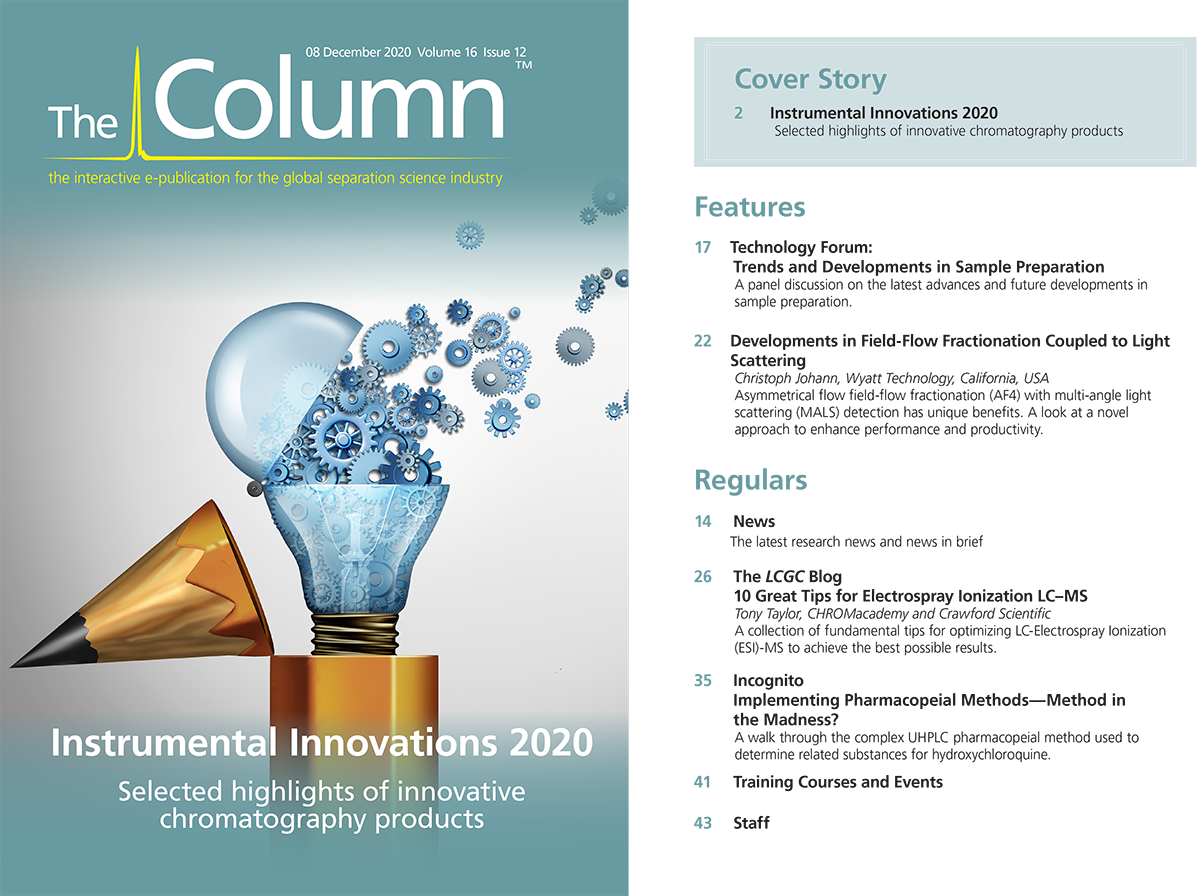Developing Robust Reverse-Phase LC Methods Using QbD and Retention Modelling
A recent study has applied retention modelling and QbD practices to the process of reverse‑phase LC method development for a NCE.
Photo Credit: Gajus/ Adobe Stock

A recent study has applied retention modelling and quality by design (QbD) practices to the process of reverse‑phase liquid chromatographic method development for a new chemical entity (NCE) (1).
Following their introduction, QbD principles have quickly been adopted across many industries including by separation scientists as a systematic approach to developing and validating methods that consistently provide reliable results with quality. This ensures methods are robust and rugged with clear critical method variables and established proven acceptable ranges. Furthermore, the development of methods through this procedure is cost effective and environmentally friendly because it saves time, energy in terms of instrument usage, and reduces solvent consumption.
Building on the widespread acceptance of QbD principles, companies have developed a wide range of empirical modelling software. However, there are still gaps within the literature of this area with researchers identifying a need to demonstrate the successful implementation of retention modelling and QbD methodologies for reverse-phase method development for NCEs.
In a previous study the researchers proposed a stepwise method development strategy (2), where the robustness evaluation involved a univariate approach or OFAT (One Factor at a Time) approach. However, this approach failed to account for the multiple interactions between robustness parameters, resulting in an overestimation of the true control space (CSp).
Building on this previous work, researchers attempted to evaluate the method robustness by creating a Design space (DSp) in a multivariate approach or MFAT (Multiple Factors at a Time) approach to arrive at a CSp. The intention was to produce an analytical method with robust ranges of operation and therefore reduce the failure risk once the method was transferred into a laboratory.
The resulting approach, based on the application of retention modelling and QbD method development, successfully demonstrated the in-silico optimization of reverse-phase chromatographic methods. Factors such as organic modifiers, separation temperature, and gradient time, were evaluated to enhance and integrate method robustness during the method development process. The end goal of separating the components of a structurally complex new chemical entity (NCE) containing process impurity and diastereomers of the active pharmaceutical ingredient (API) was achieved.
References
- K. Jayaraman et al., J. Chroma. A. 461658 (2020).
- K. Jayaraman et al., Anal. Chim. Acta. 696(1), 116–124 (2011).

AOAC International Awarded NIST Grant for Developing Drug Testing Standards
October 31st 2024The grant will be part of a new collaborative scientific initiative to address the need for standards that define the desired performance of lateral flow immunoassay test strips to detect illicit drugs in tablets and powders.
AI and GenAI Applications to Help Optimize Purification and Yield of Antibodies From Plasma
October 31st 2024Deriving antibodies from plasma products involves several steps, typically starting from the collection of plasma and ending with the purification of the desired antibodies. These are: plasma collection; plasma pooling; fractionation; antibody purification; concentration and formulation; quality control; and packaging and storage. This process results in a purified antibody product that can be used for therapeutic purposes, diagnostic tests, or research. Each step is critical to ensure the safety, efficacy, and quality of the final product. Applications of AI/GenAI in many of these steps can significantly help in the optimization of purification and yield of the desired antibodies. Some specific use-cases are: selecting and optimizing plasma units for optimized plasma pooling; GenAI solution for enterprise search on internal knowledge portal; analysing and optimizing production batch profitability, inventory, yields; monitoring production batch key performance indicators for outlier identification; monitoring production equipment to predict maintenance events; and reducing quality control laboratory testing turnaround time.